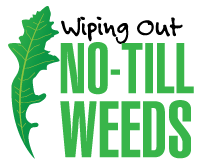No-Till Farmer
Get full access NOW to the most comprehensive, powerful and easy-to-use online resource for no-tillage practices. Just one good idea will pay for your subscription hundreds of times over.
| Editor’s note: This is the seventh in a series of articles about nine of the most troublesome weeds and tips for eradicating them from your no-till operation. |  |
While Johnsongrass doesn’t make headlines as often as weeds like Palmer amaranth or waterhemp, it’s still a troublesome perennial grass weed that can reduce yields in corn, grain sorghum, soybean, cotton and forages.
Known for its competitive nature and ability to infest new areas, johnsongrass can be poisonous to livestock in certain situations, and recently has been blamed for harboring sugarcane aphids that are devastating sorghum crops in states as far north as Kansas.
Johnsongrass was likely introduced to the U.S. before the 1800s as a forage crop. But it naturalized through the southern U.S. and West Coast and is now found throughout the continental U.S.
Johnsongrass mostly grows as a weed in cultivated and no-tilled cropland, perennial field crops, hay fields, roadsides and other wasteland areas, according to a fact sheet distributed by the United Soybean Board’s Take Action on Weeds website
(www.takeactiononweeds.com).
A rapidly growing warm-season perennial, often with erect multiple stems growing 2-8 feet high, mature johnsongrass plants are capable of reproducing by seed and rhizomes. Typically, johnsongrass rhizomes initiate new shoot growth when soil temperatures reach 60 F, and seeds germinate when soil temperatures reach 70 F.
Plants emerging from seed are capable of producing rhizomes within 3-4 weeks. Individual plants can produce nearly 30,000-80,000 seeds per plant, which can remain viable in the soil 5-10…